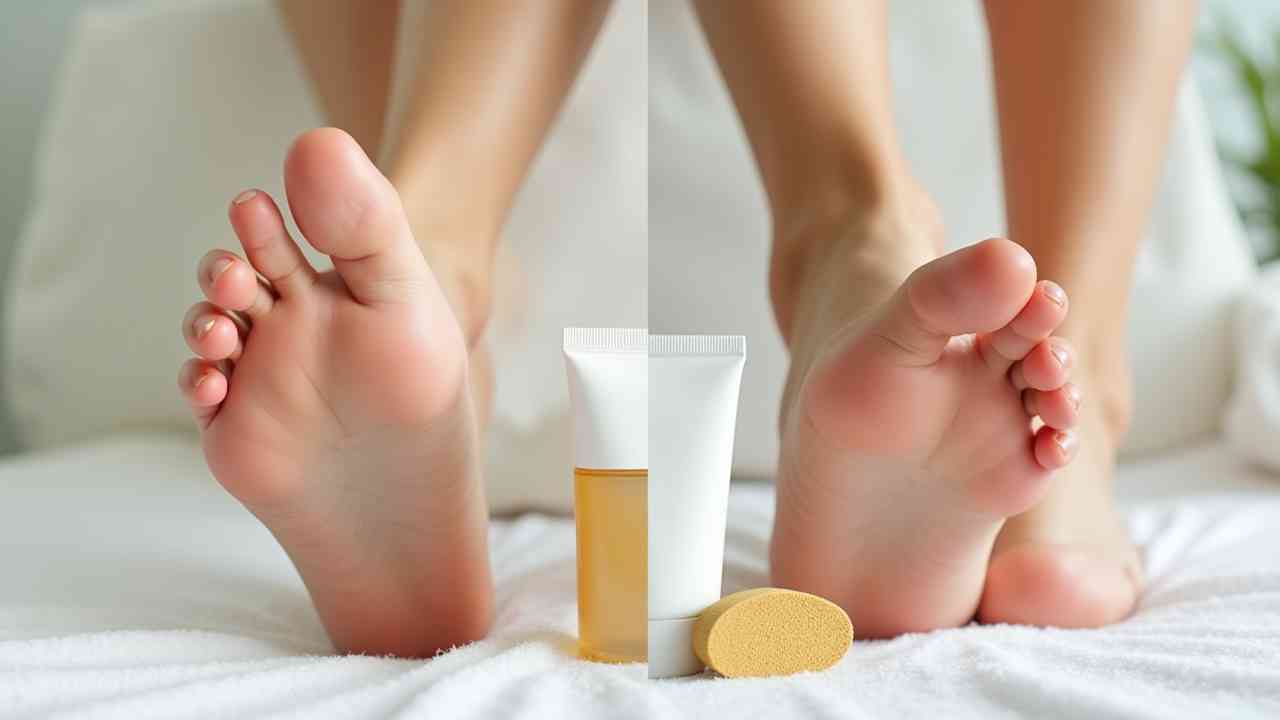
👣 How to Treat Dry, Cracked Heels (A Podiatrist's Guide to Smooth Feet)
👣 A Podiatrist's Guide on How to Treat Dry, Cracked Heels 👣
Dry, flaky feet are a common issue. But when that dryness leads to deep, painful cracks in your heels, it becomes more than just a cosmetic problem. Cracked heels, or heel fissures, can be very uncomfortable and can even lead to infection if left untreated.
So, how do you treat dry, cracked heels? The great news is that you can achieve significant relief and healing at home. The secret is a consistent, two-step routine: gentle exfoliation to remove the hard skin, and intense moisturization to heal and protect the new skin.
This guide will walk you through the best and safest methods. Let's get your feet comfortable and healthy as we head into the cozy boot season of autumn here in Bursa! 👢
🤔 First, Why Do Heels Crack?
The skin on our heels is naturally thick to withstand pressure. When it becomes very dry, it loses its elasticity. The constant pressure from walking and standing can then cause this thick, inflexible skin to split and crack. The main causes are a lack of moisture, walking barefoot, and wearing open-backed shoes.
- What is the Essential Two-Step Treatment Plan?
The best approach to treating dry, cracked heels is a powerful one-two punch. You must first gently remove the thick, dead layer of skin. Then, you must apply a heavy-duty, healing moisturizer to the vulnerable skin underneath.
Step 1: How Do You Exfoliate Safely? (Removing the Hard Skin)
The goal is to gently buff away the dead skin, not to aggressively scrub it. For the safest and best results, you must always soak your feet first. Soaking your feet in warm water for 10-15 minutes will soften the hard, dry skin, making it much easier and safer to remove.
After soaking, use one of these gentle tools on your damp skin:
- A Pumice Stone: This is a natural, gentle, and very effective tool. Use it to gently buff the callused areas.
- A Foot File: A gentle, emery-board-style foot file is another great option. Use it in a gentle, back-and-forth motion.
A crucial safety note: You should NEVER use a razor or blade-style callus shaver. It is very easy to cut too deep, which can lead to a risk of serious infection.
Step 2: How Do You Moisturize Effectively? (Hydrating & Healing)
This is the most important step for long-term results. After you have exfoliated, you need to apply a thick, powerful moisturizer. A regular body lotion is not strong enough for this job.
Look for a foot cream with these powerhouse ingredients:
- Urea: This is a superstar ingredient that both moisturizes and gently exfoliates. Look for a cream with a high concentration (20% or more).
- Lactic Acid or Salicylic Acid: These help to continue gently breaking down dead skin while you moisturize.
- Occlusives: Ingredients like petrolatum, shea butter, or lanolin are essential. They create a protective barrier to lock in moisture and protect the cracks as they heal.
⭐ What is the Ultimate Overnight Treatment?
For the best results, follow this simple routine every night before bed until your heels are healed.
- Soak your feet in warm water.
- Gently exfoliate with a pumice stone and pat your feet dry.
- While your skin is still slightly damp, apply a thick layer of your healing foot cream.
- Put on a pair of clean, cotton socks and wear them overnight.
This "occlusive therapy" traps the moisture and allows the cream to penetrate deeply while you sleep. You will wake up with noticeably softer, more comfortable feet. Consistency is the key to saying goodbye to painful, cracked heels for good! ✨